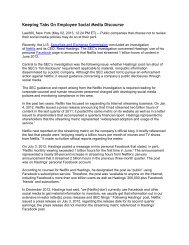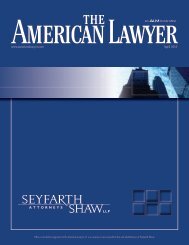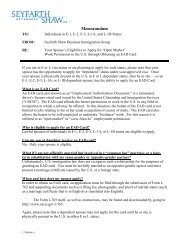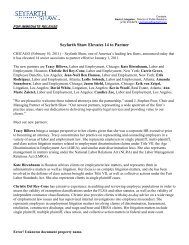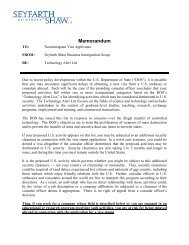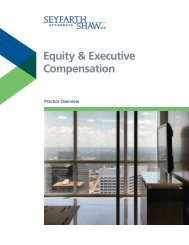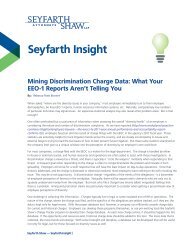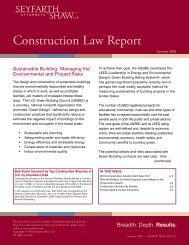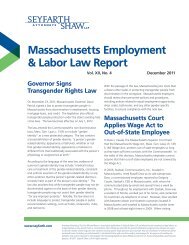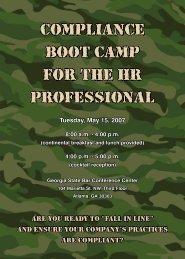Litigating California Wage & Hour and Labor Code Class Actions
Litigating California Wage & Hour and Labor Code Class Actions
Litigating California Wage & Hour and Labor Code Class Actions
You also want an ePaper? Increase the reach of your titles
YUMPU automatically turns print PDFs into web optimized ePapers that Google loves.
not be disturbed on appeal. 364 The court also suggested that the reverse would be true, in<br />
that a trial court’s order denying certification was entitled to similar deference: “We need not<br />
conclude that plaintiffs’ evidence is compelling, or even that the trial court would have<br />
abused its discretion if it had credited defendant’s evidence instead.” 365 Accordingly, the<br />
same types of arguments that the defendant in Sav-On raised—that individualized issues<br />
will predominate over common ones—still have potential to persuade a trial court to deny<br />
certification; the trial court simply has the discretion to accept or reject the argument based<br />
on its assessment of the facts before it.<br />
While the <strong>California</strong> Supreme Court’s decision does not m<strong>and</strong>ate certification in<br />
misclassification cases, the court specifically identified several issues that are commonly<br />
present in many manager misclassification cases that the court indicated could be<br />
established through collective proof:<br />
<br />
<br />
<br />
<br />
whether, as the plaintiff argued, the defendant had a deliberate policy to misclassify<br />
non-exempt employees as exempt;<br />
whether the defendant implicitly conceded all the employees were non-exempt<br />
when it reclassified all the employees at issue as non-exempt in 1999;<br />
whether any given task within the limited universe of tasks that managers<br />
performed qualifies as exempt or non-exempt; <strong>and</strong><br />
whether a manager following the defendant’s reasonable expectation for<br />
performing the job would spend the majority of the work time on exempt duties. 366<br />
The court held that a trial court could rationally conclude that those common issues<br />
predominated over the individualized issues concerning how individual managers spent<br />
their time. Dismissing concerns that these cases could prove unmanageable, the court<br />
further noted that the trial court had broad discretion as to how to h<strong>and</strong>le individualized<br />
issues once the class issues were resolved. The court said little more about those<br />
proceedings other than to encourage trial courts to be “procedurally innovative” in<br />
fashioning procedures to resolve remaining individualized issues efficiently. 367<br />
364<br />
365<br />
366<br />
367<br />
Id. at 331; but see Aguiar v. Cintas Corp. No. 2, 144 Cal. App. 4th 121 (2006) (reversing court’s decision to deny<br />
certification because the court did not consider the use of subclasses, but affirmatively ruling that certification was<br />
required rather than rem<strong>and</strong>ing with instructions for trial court to exercise its discretion using proper st<strong>and</strong>ard).<br />
Id.<br />
Id. at 327.<br />
Id. at 339.<br />
Seyfarth Shaw LLP | www.seyfarth.com <strong>Litigating</strong> <strong>California</strong> <strong>Wage</strong> & <strong>Hour</strong> <strong>Class</strong> <strong>Actions</strong> (12th Edition) 78



